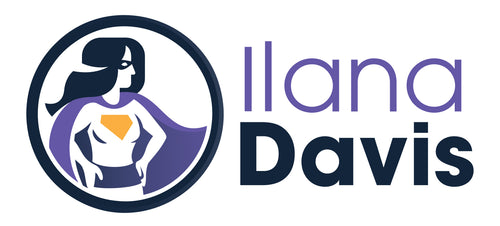4 Tips to Boost Organic Web Traffic
Published: October 15, 2020
How do I bring more traffic to my site without spending a ton of money on ads?
I hear this question a lot. Usually in conjunction with concerns around low conversion rates on their Shopify store.
People are visiting but not buying. Help!
If you’re running ads, finding the right people to visit your Shopify store can feel like a needle in a haystack. I’m a firm believer that organic traffic is one of the most effective ways to increase conversions.
I asked a good friend of mine, Charlotte Chipperfield, Founder of Chipperfield Media, and my go-to for marketing help to chime in on how she recommends Shopify store owners boost their organic traffic. Here’s what she had to say.
The saying “build it and they will come,” unfortunately, that doesn’t always apply when it comes to websites.
But have no fear, there are many strategies that you can leverage to organically increase your web traffic.
Building up web traffic can take time, but as you increase your site visits, more people will learn what your business does and what you offer. This all leads to customers knowing, liking, and trusting your business.
To help you to start increasing your web traffic, I’ve outlined 4 tips that I use for my business and for clients that are proven methods for increasing web traffic. As you implement and start testing these techniques, you’ll begin to see which activities are producing the most results. Then you can continue to lean into what is working and move on from what isn’t.
Tip #1: Create Valuable Content:
Creating content is one of the most powerful tools in marketing. Your content marketing strategy can be made up of a number of elements such as videos, blogs, social media, a podcast, being a contributor writer to Forbes, Medium, on Linkedin, etc.
Regardless of the medium, hosting valuable content on your website that aims to teach, inform or entertain your potential and returning customers to inspire them to make a purchase, join your email list, or invest more time into your world and on your website.
For example, if you have a blog on your website, people may enter your site through the blog and not from the home page. Their search for a specific topic or solution led them right to a specific blog post on your website. That is why understanding your customer’s questions or pain points can be valuable for creating content that helps to answer these questions. Blog post titles should be clear so the reader knows what to expect from the blog post. As you are writing the post, leveraging keywords can help you better show up in search rankings or SEO (search-engine-optimization). You can use Google’s free Keyword Planner to see how often people are searching for keywords that pertain to your business and customers.
Another great resource that I love for researching what content to create is this website, Ask The Public. You can search by industry and keywords to see what questions people are asking the most on Google. You can then create content that answers these questions to increase your web traffic.
Bottom line: Make content that speaks directly to solving your customer’s pain points while optimizing your SEO.
Tip #2: Engage on Social Media
It’s no secret that social media is a powerful tool in helping to drive web traffic. Not only is the content you post important, but so is the time you spend engaging and inviting people to visit your website.
There are multiple ways to do this through social media:
- At the end of your captions, have a link or call-to-action to visit your website for more information, to join your mailing list, or sign up for your latest program.
- Send a DM to new followers welcoming them and include a link to your website to get your latest freebie or to read your full bio.
- Build relationships with prospective clients and customers and invite them to take the next step of visiting your website.
- Be sure to have a website link in your bio and about sections.
- Actively engage in the comments of other thought leaders and like-minded brands who speak to the same audience.
- Engage in groups where your target customers and clients are posting. Start by commenting and providing insight based on your expertise before self-promoting. Some groups don’t allow links or promotions so be sure to read the rules.
Tip #3: Features + Partnerships
When it comes to increasing your reach and web traffic, partnering with other individuals and brands can be a powerful way of attracting new people. This can take on a few forms:
Features:
- Can you write a guest blog for another website that isn’t a direct competitor but also speaks to your ideal audience? (Just like I am doing here by providing my insight!)
- Can you invite a guest blogger to your website to write a post for them to share with their audience?
- Can you pitch different media outlets to write about your product or service?
Partnerships:
- Can you partner with another individual or like-minded brand to do a giveaway on social media?
- Could you collaborate with other like-minded individuals to create a digital workbook or course?
- Can you host a webinar and position it as a tool for another thought leader or brand as a resource to their audience? You can even create a social media post in their brand colors and fonts for ease of promotion.
Tip #4: Include Call-To-Actions
A best practice in marketing is to always tell your audience what to do next. It’s one thing to read an email or social media post but the power is to invite your audience to take the next step.
No matter if you are at a speaking engagement, posting social media, sending an email marketing campaign, or networking, always have a call-to-action (CTA) or a specific next step for people to take.
For speaking engagements and networking, inviting people to sign up for your newsletter may be the right next step.
For email marketing, include buttons to help direct people to make a purchase, or sign up for your course.
On social media, include a link in applicable posts to drive people to learn more on your website.
Some examples of CTAs:
- Download, request, and enjoy! New users, enter code JOY for up to $50 in free credit.
- Watch our virtual summit and get 25% off a new professional plan.
- Read the full article by heading to our blog via the link in our bio.
- Shop our biggest sale of the year. Shop now.
Bottom line: A call-to-action can be a button, a two-word phrase such as “buy now,” or a sentence inviting a person to take action.
When you commit to these 4 activities to boost your organic web traffic, you can not only start to see your web traffic increase, but you will start to build relationships with customers.
JSON-LD for SEO
Get more organic search traffic from Google without having to fight for better rankings by utilizing search enhancements called Rich Results.




